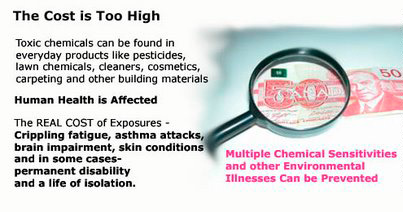A resource for people who want to create a non-toxic, healthier home for themselves, their kids, their pets and our environment. Due to my own journey living with environmental-related illness, I’ve spent the last ten years talking to people, reading and learning how to detox my own living space. Why do I focus on the home? Because home is where we spend most of our time and it’s where we have the most say in what comes in.
How do we know what’s safe? What does “non-toxic” on a label really mean? What are some websites that have some of the groundwork for us? What are some tools out there to help us choose safer products? What is greenwashing? What ingredients are harmful? What are safer alternatives to harmful products and practices?
These questions and others are answered in blog posts and in my podcast episodes.




Lynn, thank you so much for your comment and for reading my blog. I’d love to be part of any discussion you might have on this important topic. Thanks for your work on this issue.
Fragrance-free…..If a products states it is fragrance-free, it should be fragrance-free. About 15% of people have allergies and reactions with fragrance, synthetic or natural. Even essential oils can seriously effect people with chemical sensitivities. As well, persons could mistakenly purchase a product that states fragrance-free and end up with a serious reaction. Incidently, there are a number of ingredients that can be added to a formula that neutralizes odours. Most of the time these toxic neutralizers are never listed on a label.
Thanks, Brian. Great info.
Saponified oils….how are oils saponified? Typically with Sodium Hydroxide (draino). Sodium Hydroxide is the byproduct of chlorine manufacturing. Treated salt typically passes through Asbestos panels or mercury cells in a process called electrolosis. Out on side comes chlorine and out the other side comes Sodium Hydroxide. Chlorine along with the dioxin from it, are about the deadliest chemicals to humans. If demand for Sodium Hydroxide was to dramatically decrease, the price of Chlorine would make it very expensive, thereby encouraging safer and more natural alternatives. Sodium Hydroxide is very toxic and corrosive. When combined with oils, the majority of it is neutralized, however, a certain % does remain in the saponified oil, and it can be detrimental to skin over time, breaking skin cells down until the skin becomes sensitized. When this occurs, persons can begin having allergies and reactions to products. A company should list Sodium Hydroxide on the label, as an ingredient, rather than simply listing the process of saponification.
EWG says the saponified oils are 0-1 toxicity out of 10. That’s low. Citric acid rates 4/10.
Thanks for the info.
Hi,
We reached out to you recently about the Healthy Home Expert Panel with our 22 experts’ focus on creating the greenest, healthiest home possible.
http://www.everydayhealth.com/allergies/expert-tips-to-minimize-indoor-allergies.aspx
We are still actively covering this topic and promoting this piece, especially in the height of allergy season and spring cleaning–and we think it’s a great topic to share with visitors of chemicalsoup.wordpress.com.
Let me know if you are able to mention the Healthy Home Expert Panel on chemicalsoup.wordpress.com, and we’ll happily give you a Twitter shout out to our 35,000+ followers.
Healthy Living!
Blaine Skrainka
Outreach Director
Everyday Health
blaine@everydayhealth.com
345 Hudson Street, 16th Floor
New York, New York 10014
FOLLOW US
twitter.com/everydayhealth
facebook.com/everydayhealth